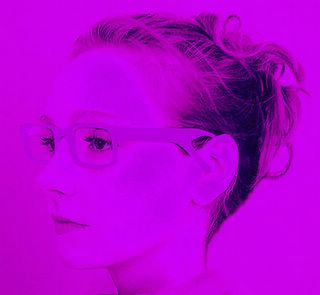In 2006, Let's Not Overlook The Deaf, Hearing Impaired - or Hearing

'Hearwear', an exhibition currently on at the V&A, seeks to change the way people think about one of our most neglected senses
http://www.creativematch.co.uk/viewNews/?91864
My last job as a television subtitler trained me always to prioritise the needs of deaf and hearing impaired viewers. We were taught to 'put ourselves in the position of a deaf viewer.' Nothing was more valuable a lesson in editorial training than trying to watch a programme with the subtitles on and the sound turned off. The written quality of the often heavily edited subtitles was, in the early days of my training in the mid Nineties, essential. You could not lose sight of the script or documentary writer's intentions. You could not distort the meaning, yet often had to rephrase as there simply was not enough time to caption everything that had been said. The story or reportage had to flow, the captions couldn't obscure speakers' mouths and had to be clearly colour coded for identification. At the same time, viewers had to be able to see what was going on, and there were a range of other important considerations relating to the quality of the subtitles.
The needs of our deaf and hard-of-hearing audience were at that time paramount. Most subtitling staff were carefully selected from a journalistic, editorial or literary background. Unfortunately, in recent years, economic changes within the subtitling industry mean corners are being cut, staff are often working at breakneck speed to meet targets, and mishearings and spelling mistakes are an unfortunate and inevitable consequence of this. According to the latest RNID figures, there are 8, 945 000 deaf and hard of hearing people in Britain. For many years in my job as a subtitler I worried about the impact this gradual erosion in quality might have on this important audience. It seemed that, due to purely commercial pressures, they were in danger of no longer being fully listened to. Because of this my awareness of this important group of people was raised and is the reason why I recently noticed with great interest an exhibition on at the V&A - 'Hearwear: The Future of Hearing'.
While my own experience of the deaf and hard-of-hearing in Britain was limited to ensuring their continued, high-quality access to television through subtitles, 'The Future of Hearing' caught my eye because it looks, as its name suggests, at what is now possible for the deaf, the hearing-impaired and the hearing in our world of increasingly sophisticated technology. The growth of mobile phones, earpieces, MP3 players and other kinds of headphones has been explosive in the last few years, yet surprisingly, the hearing aid has, until recently, not seen much advancement in its design. The idea of 'disguise' in producing flesh-coloured, miniature earpieces has largely dominated design thinking. Yet when we consider such striking designs for the hearing as the iPod, which is geared to stand out so obviously, does this really make sense? Perhaps it is time to reassess the way we are treating hearing loss. Should it always be hidden? Perhaps some deaf or hearing-impaired people even want, or don't mind, people knowing that they have a hearing problem.
A recent trip to the opticians for an eye test made me consider this further. Approaching 40, like so many of the population, my eyes are starting to deteriorate. I need new glasses. So many of us wear them and think nothing of browsing through ranges of designer frames to find something that suits. The ranges on offer now are staggering - rounded, square, heavy-rimmed, brightly coloured, nerdishly square, thick, transparent, horn-rimmed, floral... How on earth do you decide? Still, surely it is better to be faced with a choice like this than hardly any. Is a deaf person faced with such a choice when they go to choose a hearing aid? It seems not, but hopefully this is about to change.
Conceived by the Royal National Institute for the Deaf, the magazine Blueprint, and brand agency Wolff Ollins, 'Hearwear' seeks to change the way people think about hearing by showing how fashionably designed 'hearwear' can be as desirable and accessible as 'eyewear.' 15 designers have been commissioned to rethink the future of hearing, from 2007 to an imaginary 2020. Together they present a view of the future which seeks to shift hearing health technology from the world of disability to the world of desirability. Visitors to the display are prompted to consider a world in which our environment could adapt to protect our hearing; it might calm us down, or even allow us to 'turn off' noisy neighbours. 'Hearwear' looks set to be a fascinating and long overdue exhibition into one of our most neglected senses. Although the exhibition has been on since July, 2005, there is still time to catch it as it finishes on the 5th March, 2006.
For more information, visit the V&A website
Sources: The V&A, the RNID, the BBC and staff at creativematch
